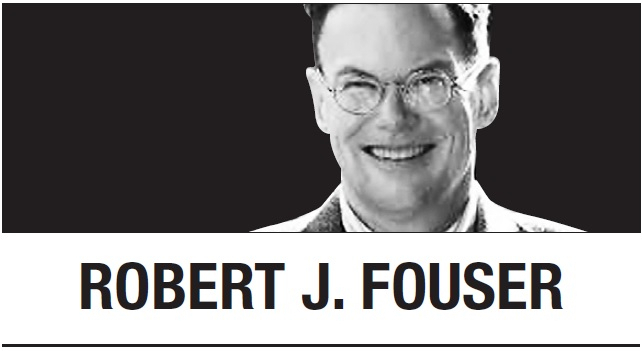
The other day, I was asked what comes to mind when I think of Seoul. I thought for a moment and answered: coffee.
Great coffee is everywhere. Judging by the number of cafes, variety of flavors and level of consumption, Seoul has become one of the world’s biggest coffee capitals.
How and why did Seoul become a great coffee city? Coffee arrived in Korea with imperialism in the late 19th century. Emperor Gojong loved coffee and often drank it at the Jeonggwanheon in at the palace Deoksugung. While Western food culture was concentrated in hotels, Japanese cafe culture made its way to Korea during Japanese occupation. Poet and novelist Lee Sang ran the famous Jebi Dabang in the 1930s. Cafes, which were called dabang, or tearooms, became go-to places for writers and intellectuals, symbolizing the rise of a new urban culture.
After liberation and through the 1950-53 Korean War, the cultural image of coffee and tearooms remained limited to the urban intelligentsia, but with rapid economic growth in the 1960s coffee became more common. As cities grew, people needed a comfortable place to meet, but more importantly, coffee was a symbol of achieving economic success during the economic boom. Instant coffee, which came to be known as “dabang coffee,” became popular and was frequently given as a gift.
As tearooms proliferated, they became more varied. They ranged from places to take a quick break to places for long talks and dates. Rapid urbanization during the boom led to a severe housing shortage with crowded living conditions. Instead of meeting at home, people met in tearooms, which grew as the population grew.
The rise of tearooms is also related to the economic structure of South Korea.
The self-employment rate in South Korea in 2022 was 23.5 percent, ranking it eighth out of 38 members of the Organization for Economic Cooperation and Development, but it used to be even higher. Tearooms spread because they were an attractive business prospect for self-employed people at the time. Compared to restaurants and bars, they were easy to start and could operate with relatively little investment.
By the 1990s, tearooms began to disappear. As living standards rose, people’s tastes became more sophisticated, causing tearooms to fall out of favor. Cafes with distinctive interiors took their place. In the 1990s when pagers preceded mobile phones, cafes with landline phones on every table were popular. Weak hazelnut-flavored coffee was popular at the time. During the recovery from the 1997 Asian financial crisis in the early 2000s, coffee chains grew stronger and competition became more intense.
By the end of the 2000s, cafes were at a crossroads. Consumers had more money and began to demand better, more specialized coffee, which fueled the popularity of espresso-based coffee. Since the early 2010s, small cafes with excellent hand-drip coffee and cappuccino foam art have generated buzz on social media. At the same time, the “newtro” sensibility -- a combination of “new” and “retro” -- made hanok, rustic warehouses and Japanese-style houses in older parts of the city attractive places to open a cafe.
As this trend quickly spread, cafes were forced to rethink their ambiance. The investment costs to start and operate a cafe also increased.
The “newtro” cafes of the 2010s fulfilled the public’s desire for unique spaces, but also became triggers for gentrification. This phenomenon, which became pronounced in places like London and New York in the late 20th century, reached Seoul in the form of “commercial gentrification” in the 2010s. Many of the “hot spots” that have become famous for cafes in Seoul were originally residential neighborhoods.
To capitalize on the “newtro” sensibility, you need to find a neighborhood with old buildings that can be remodeled. The startup costs are high, but still less than a restaurant or bar, which means that cafes are often the first to open in old neighborhoods.
Once a few “newtro” cafes open, the area gains attention on social media and foot traffic increases, starting the process of commercial gentrification. Professional “cafe investors” open multiple cafes in the hope to drive up real estate prices in the new “hot spot.” In the process of turning a quick profit, residents are often forced to move, while those that stay must deal with crowds and noise.
In this paradigm, cafes have become a tool to add value to real estate prices. Knowing this, I often feel a sense of disappointment when I go to trendy cafes in “hot spots” these days because I know that they’re not really about coffee.
Robert J. Fouser
Robert J. Fouser, a former associate professor of Korean language education at Seoul National University, writes on Korea from Providence, Rhode Island. He can be reached at robertjfouser@gmail.com. The views expressed here are the writer’s own. -- Ed.






![[Today’s K-pop] Blackpink’s Jennie, Lisa invited to Coachella as solo acts](http://res.heraldm.com/phpwas/restmb_idxmake.php?idx=644&simg=/content/image/2024/11/21/20241121050099_0.jpg)
